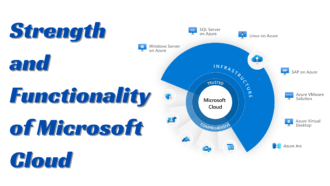Understanding data migration: Strategy and best practices
- 1 Introduction to database migration
- 2 Data migration steps
- 2.1 1. Pre-migration
- 2.2 Importance:
- 2.3 2. Analysis
- 2.4 Importance:
- 2.5 Strategizing
- 2.6 Importance:
- 2.7 Migration
- 2.8 There are mainly seven basic commands used, which can be defined as:
- 2.9 Importance:
- 2.10 Post-migration
- 2.11 Importance:
- 3 How to resolve the challenges involved in database migration
- 3.1 1. Data loss risk
- 3.2 Solution:
- 3.3 2. Semantics Risk
- 3.4 Solution:
- 3.5 3. Data corruption
- 3.6 Solution:
- 4 Summing up
As a digital-era businessman, there is a requirement to keep up with the radically evolving pace of technology. There is so much pressure in order to enhance the efficiency, scalability & productivity of the business. Business owners have a number of reasons in order to migrate data & it has been seen that database migration is one breakthrough that can help to improve the business goals in the least time. Database migration is mainly occurring due to the underlying concern of losing the data. Challenges of database migration create a demand to bring out success in migration-based projects. This also requires overall database knowledge that starts with proper planning & ends with services post-migration.
Introduction to database migration
Migration of data implies the data transfer from one platform to a new platform. In this, the data can be transferred from physical storage to cloud storage in order to make a scalable or reliable platform. To gain success in database migration implementation, there is a requirement to overcome the challenges which are related to database identification at a different location. To offset the challenges, it seems to be important to follow the effective strategy of database migration.
Data migration steps
There are some important steps discussed below for the migration process:
1. Pre-migration
The main aim behind pre-migration is to gain knowledge about the data-migration scope within an organization. This seems to be important for the database migration service provider to understand the requirement and evaluate the implementation’s scope. Besides the scope, the vendor also has a plan for the resources and time.
Importance:
This step helps and offers a bird-eye view in order to check the process and activities that are going on. You can also evaluate the database migration time taken that can help the shift the business practices.
It is also to ascertain whether the IT disposal service is complete before the final migration to the Cloud. This ensures that no physical equipment is left in the server area. The basic idea is to make optimum use of floor space by performing ITAD services. Here, a specialist like “Dataknox” can come in really handy if your company or business is based in Newark, CA.
2. Analysis
After evaluating the database migration step, the analysis seems to be an important step, this step helps to evaluate the knowledge about the present database infrastructure & then plan to move out to a new or latest infrastructure. It mainly includes three sorts of questions, which can be: is it to be done through a local infrastructure of cloud, is it to be done in a scalable manner, is it to be done in order to reduce the complexity of data? After collecting the data, service providers can set the resource requirements, rules and norms.
Importance:
This step helps evaluate the complexity and difficulty of the entire data migration process. When complexity is identified, proper brainstorming and planning are done to offset the challenge in the primary stage.
Strategizing
After evaluating the requirements of database migration, this is time to evaluate the time taken flow for the migration of the database. This step evaluates the schedules & priorities of the migration in order to reduce the downtime of data transfer. Data migration is mainly of two types. Big bang can be done only in one go. Another one is trickle migration, which can be done in parts.
The Big Bang benefit is that it was completed only in one stipulated timeframe, whereas trickle migration can be performed in phases; hence, it has several testing times.
Importance:
Proper strategizing helps in evaluating the overall time required in the process of database migration. It can also assist in evaluating the efficient way for the implementation process.
Migration
This is the step where actual implementation can be carried out for database migration. After fulfilling the preliminary requirements be adequate, the development team is using effective tools & frameworks as per the essential script used for data migration. There are so many databases that are present for the business. A plan for database migration is mainly based on flyway-type database migration that seems to be an open-source tool. This tool provides simplicity along with the convention-related configuration.
There are mainly seven basic commands used, which can be defined as:
• Repair
• Undo
• Info
• Migrate
• Clean
• Validate
• Baseline
Along with it, the AWS database migration service seems to be reliable, low cost, and offers support with minimal downtime. It can be used to migrate the database. It also offers heterogeneous, homogeneous, consolidation, and replication services.
Importance:
Migration can be defined as a real process of moving data from one platform to another. In this, the service provider of database migration has ensured that there will be no data loss in order to transfer the data and offer secure transactions.
Post-migration
After accomplishing the step of database migration, some underlying issues remain. In this type of case, the best companies for database migration services offer post-migration services to check whether the database migration process can be carried out without data loss.
This process includes repair, validation, handling & testing of the process. The database seems to be fine-tuned up in order to check whether the application is ready to launch or not.
Importance:
This step helps the developers evaluate the issues that can be overlooked during the migration process. In this, a database can be prepared for applications based on real-life.
How to resolve the challenges involved in database migration
1. Data loss risk
When data exists in the old database, it gets lost from the latest or new database without internal efforts by an external type of source, this can be defined as data loss. Data loss seems to be the most common challenge for database migration, and there is a huge financial loss happening.
Solution:
Reconciliation seems to be a very effective or efficient solution for evaluating data loss. Two folded reconciliations are named Count and Column of key financial. Key financial columns help check out the granular level for the problem and find which record went missing, whereas count will help compare the stored records in the legacy database.
2. Semantics Risk
When the measurement unit between old and new data is different, they can be considered different entities. In this type of case, it seems important to check that data is not lost.
Solution:
The scope of test cases should be widened in order to detect semantic risks in the primary phase of migration. These test cases consist of points with incompatibilities between old and new migrated data.
3. Data corruption
Data corruption can be defined as a different format for the old system and new system. This is a very common issue when encountering anomalies and redundant data during the database migration process. It will also increase the concern of data integrity challenges.
Solution:
Data corruption can be done by evaluating by validating data from every column & row from an old to a new database. The three most common validation methodologies have been used, which can be defined as validation of sample data, validation of data subsets & validation of the overall data set.
Summing up
An appropriate decision to select the best strategy is important to make the database migration successful. If the road map for the migration is effective or appropriate, then execution will come up with the best outcomes. If in case of any discrepancy occurs, there is a requirement to look for an expert who can help in order to prevent data loss. You can hire a skilled or experienced mobile app development company in order to handle the process of data migration with ease. We at Mtoag Technologies undertake the deep process of database migration from the initial stage to finalization. We have skilled developers who validate the data, which have been stored in a new sort of database to evaluate the data loss instance & corruption of data.

















